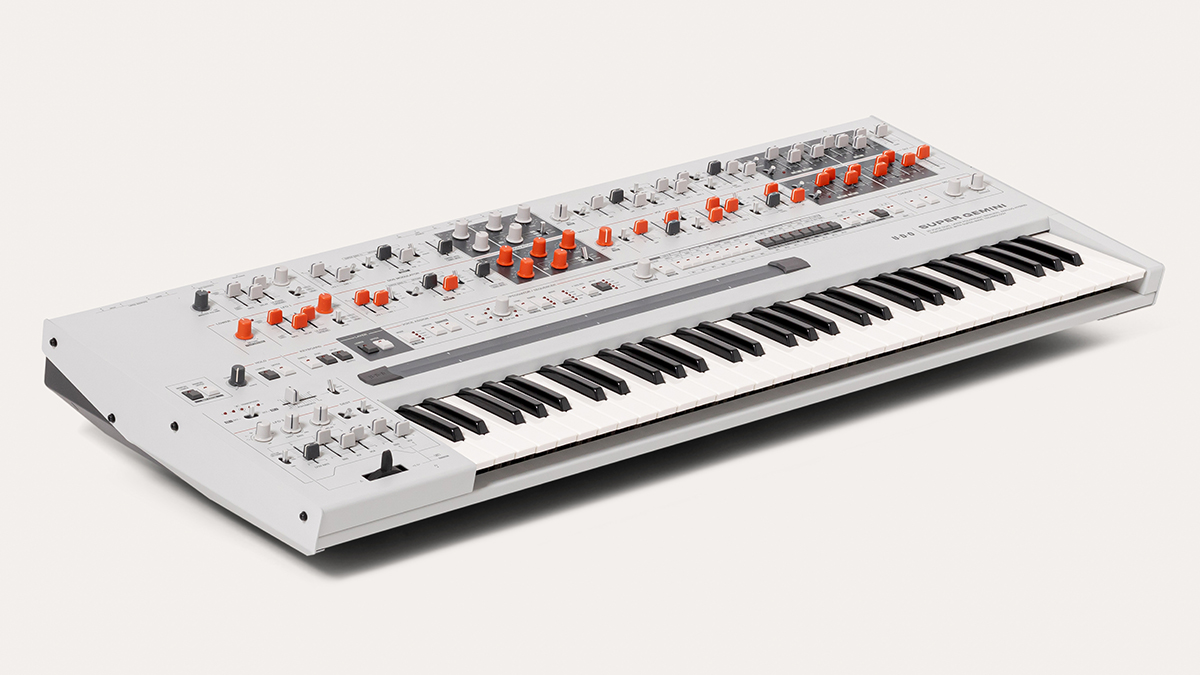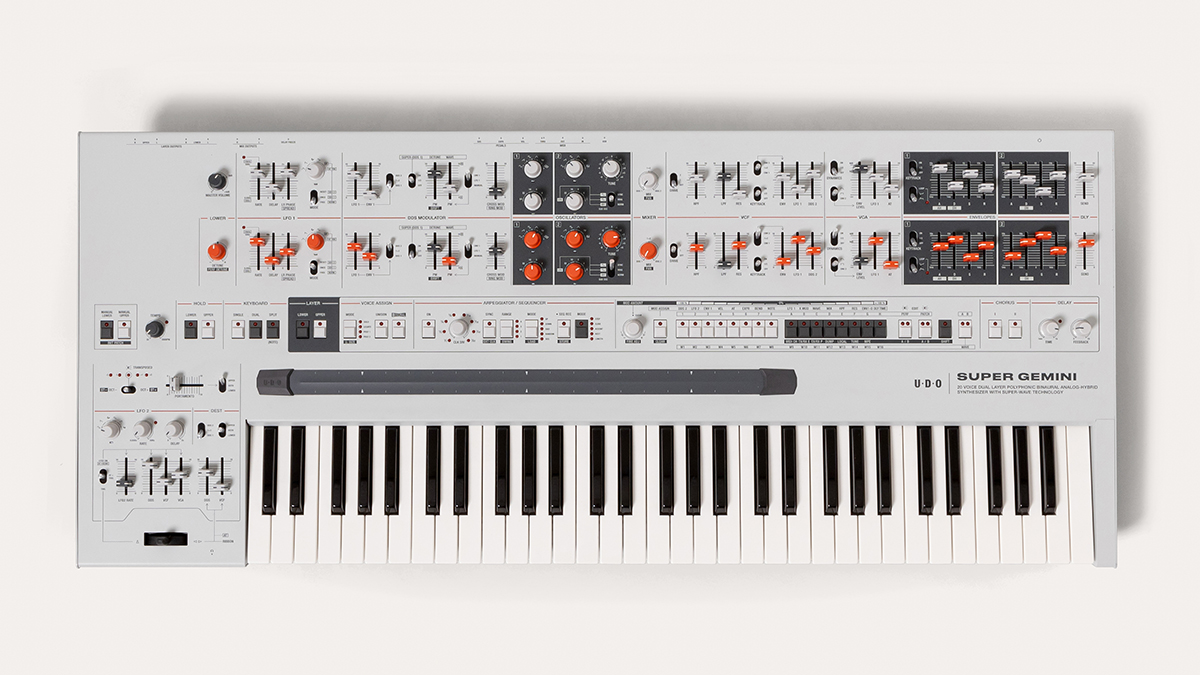Superbooth 23: UDO’s binaural, hybrid analogue Super Gemini synth promises to fuse the past, present and future
Dual-layer monster offers polyphonic aftertouch and 20 voices of polyphony

Superbooth 23: UDO has followed-up the Super 6 with a second synth in the range, the Super Gemini. Billed as a “bi-timbral analogue-hybrid powerhouse”, this has a dual-layer, bi-timbral design and promises to give you a huge amount of control.
The “spectrally rich digital hardware oscillators” are said to be unique, and offer the likes of wave morphing, cross and ring modulation, bi-directional sync and more. These feed into an all-analogue signal path that’s inspired by vintage instruments from the past, creating an instrument that’s said to fuse a state-of-the-art FPGA digital architecture with a typical voltage-controlled synth.
UDO is making a big deal of the Super Gemini’s dual levels of synth control, which enable you to tweak, split and sequence multiple timbral layers. The true stereo signal path, meanwhile, means that the 20 voices can be twinned to form 10 ‘super voices’, with the left and right channels each getting their own complete synthesizer voice. This so-called binaural synthesis method promises to deliver both a warm analogue tone and dynamic, spatial sounds.
Build quality of the Super Gemini is said to be top-notch - it’s made entirely from aluminium and steel - and you get both a 61-note semi-weighted keyboard with polyphonic aftertouch and a ribbon controller. There are 256 performance and patch slots, 64 interchangeable waveforms and 16 sequences.
The price and release date of the Super Gemini are still to be confirmed, but we’ll bring them to you when we have them.
Find out more on the UDO Audio website.

Get the MusicRadar Newsletter
Want all the hottest music and gear news, reviews, deals, features and more, direct to your inbox? Sign up here.



I’m the Deputy Editor of MusicRadar, having worked on the site since its launch in 2007. I previously spent eight years working on our sister magazine, Computer Music. I’ve been playing the piano, gigging in bands and failing to finish tracks at home for more than 30 years, 24 of which I’ve also spent writing about music and the ever-changing technology used to make it.
“Do you dare to ditch those ‘normal’ beats in favour of hands-on tweaking and extreme sounds? Of course, you do”: Sonicware CyDrums review
“Excels at unique modulated timbres, atonal drones and microtonal sequences that reinvent themselves each time you dare to touch the synth”: Soma Laboratories Lyra-4 review









